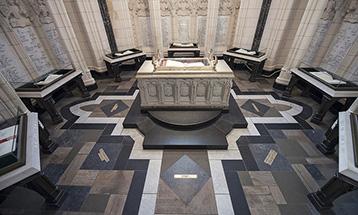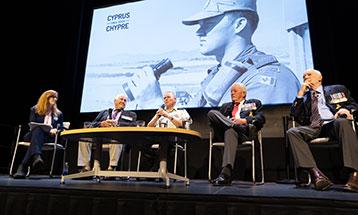As the country’s cities became involved in war, their industries and populations shifted—sometimes dramatically. Montreal stood as Canada’s largest city until the second half of the twentieth century. It is also strategically located in the St. Lawrence River and connected to substantial shipping and rail routes. The city was a very important part of Canada’s efforts throughout the First and Second World Wars.
In part two of Hometown Service, we see how the city adapted to the upheaval caused by worldwide conflicts.
A city in conflict
At the outset of the First World War, Montreal was a city divided sharply along cultural and linguistic lines. Many francophones and anglophones saw Canada’s involvement in the war in very different ways. English speakers tended to feel more strongly about supporting the British war effort. French speakers were more ambivalent. Newspapers in both languages published heated debates regarding Canada’s wartime role and conscription – compulsory military service. Public protests over these issues – particularly conscription –also took place throughout the war.
Montreal also struggled with high rates of seasonal unemployment. Even during the opening year of the conflict, when ship-building contracts and other wartime work began to come to the city, there was often not enough work for everyone. The wartime economy would soon gather steam, however, and employment rose. Munitions factories and other industries producing materials for the Allied war effort provided jobs for tens of thousands of residents.
War breaks out again
Between the wars, the Great Depression hit Montreal hard. Both government and industry were quick to respond when war struck again.
Under federal direction during the Second World War, many factories took up the production of military vehicles, aircraft and armaments. Canadian Pacific Railway’s Angus Shops and Montreal Locomotive Works built tanks. More than 5,200 were produced by the end of the war. Montreal Locomotive Works also built more than 2,000 Sexton self-propelled guns. In Verdun, a community bordering Montreal, a Dominion Industries Limited factory employed thousands more. Remarkably, that facility would produce more than 1.5 billion rounds of small arms ammunition over the course of the war.
A city finds itself
Spirits in Montreal tended to be higher during the Second World War than in the earlier conflict. After the hard times of the Great Depression in the 1930s, the economy flourished and the city’s vibrant entertainment scene also made it a favourite spot for soldiers on leave.
While times were challenging, Montreal came through wartime stronger and more vital. The industry established during the wars helped Montreal continue and build on its status as one of Canada’s most important cities.
Learn more about Canada’s military history and find ways to practice remembrance all year long.
Date published: 2020-02-10




